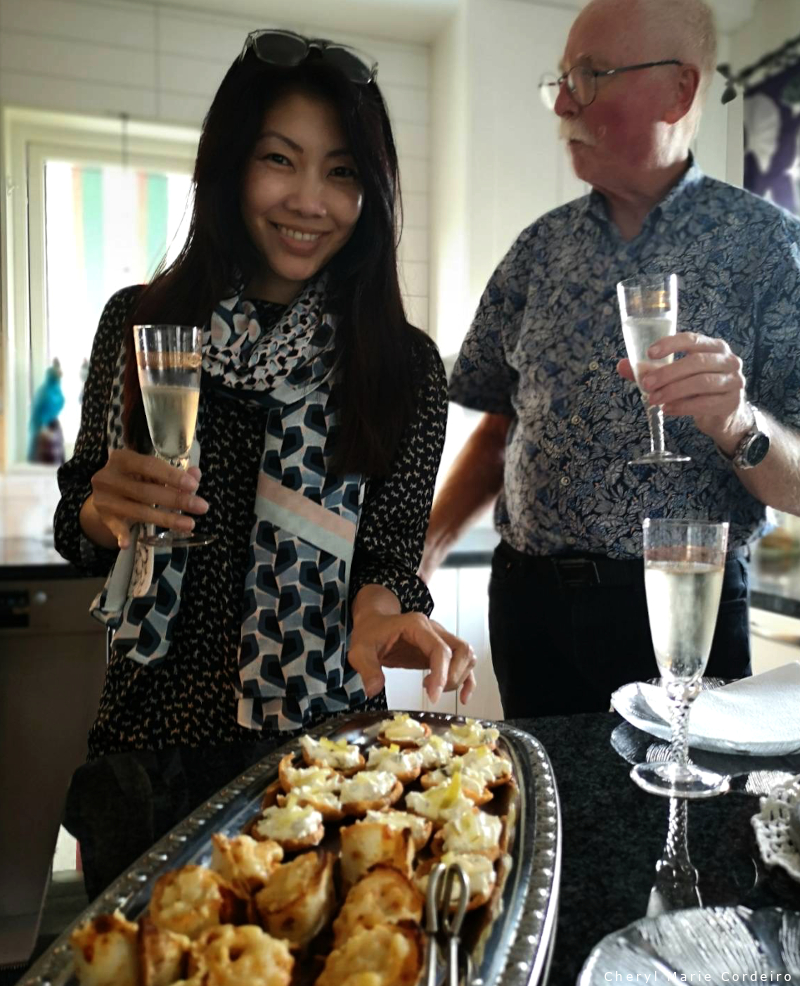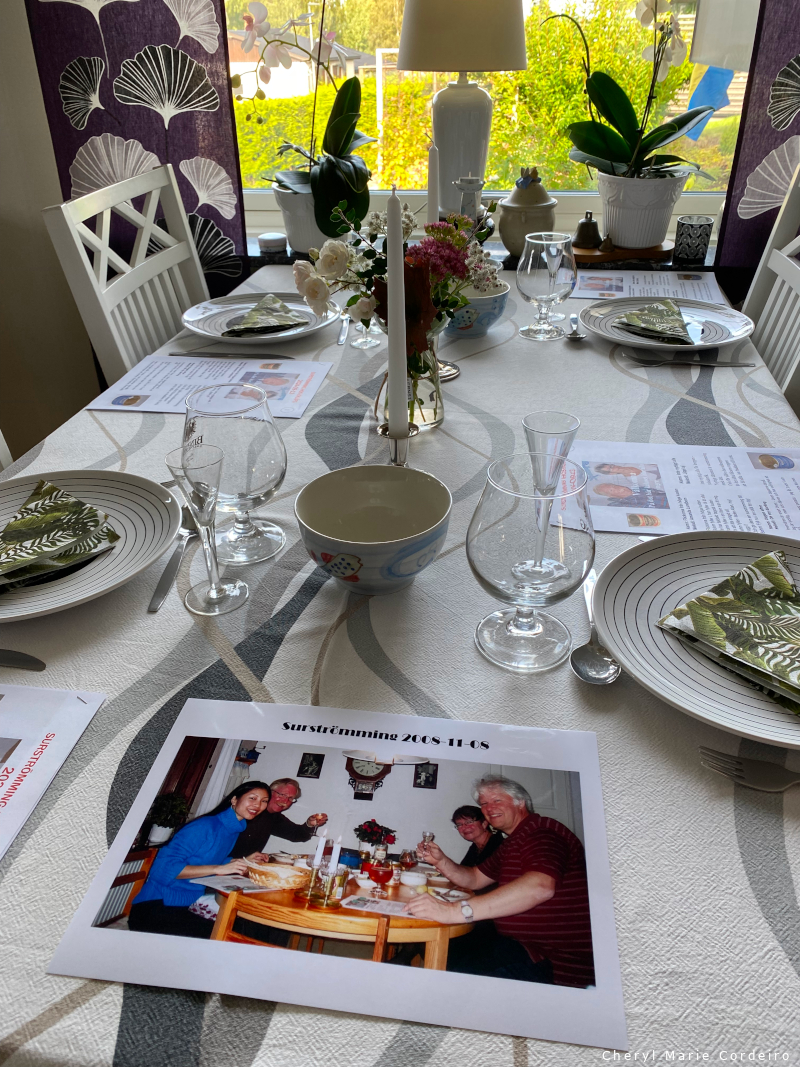
In Karlstad for a surströmmingfest.
Text & Photo © CM Cordeiro & , JE Nilsson 2024
Surströmming: A Traditional Swedish Delicacy
Surströmming is a traditional Swedish delicacy made from Baltic herring that undergoes fermentation. The word surströmming is derived from “sur” (meaning sour or acidic) and “strömming” (the local term for Baltic herring). Historically, this process was a practical solution for preserving fish with minimal salt, particularly during times when salt was scarce. It originated from the need for efficient food preservation before refrigeration existed, making it an essential staple in Swedish households.
Strategic with the use of a kitchen towel as cover.
The Production Process
The production process involves catching Baltic herring just before spawning in early summer, lightly salting them, and fermenting the fish in barrels for several weeks. After the initial fermentation, the herring are canned, and the fermentation continues in the sealed container. This creates gases, resulting in the characteristic bulging of the can—a hallmark of surströmming and the source of its infamous odor, caused by compounds such as hydrogen sulfide, butyric acid, and propionic acid.
The Setting: Karlstad, 2024
It was in the winter of 2008 in Karlstad that I last enjoyed surströmming, with the fermented fish on my dinner plate. On the day of our reunion in 2024, we gathered once more in Karlstad. After so many years, I was reminded of the strategic way to open a bloated can of fermented herring: cover it with a kitchen towel to avoid the juices spraying onto the ceiling—a smell that would take months to clear. Instead of opening the can outside, we opted for a more controlled environment: indoors, in the kitchen, with all other doors to the house closed.
The table was set with the traditional accompaniments commonly paired with surströmming: tunnbröd (thin, either soft or crispy bread), boiled potatoes, diced onions, and butter. We also had schnapps and beer on hand, as alcohol is traditionally served alongside surströmming to balance its strong flavor. And, of course, a song pamphlet—because no surströmmingfest is complete without singing.
The Fermentation Process: Science Behind the Smell
If you love pungent European cheeses, you might find the surströmming experience to be quite mild in comparison. Though the fish has a distinctive smell, it is not as intense as some might expect—certainly less so than a ripe durian.
The distinctive smell of surströmming results from the ongoing fermentation inside the can. During this process, enzymes from the fish and bacteria play critical roles. The bacteria responsible for fermentation are predominantly anaerobic, meaning they thrive in the absence of oxygen. One of the main bacterial contributors is Haloanaerobium, which produces gases like hydrogen sulfide that contribute to the strong, rotten-egg-like odor.
The fermentation process is effective in keeping away harmful bacteria. Studies by the Swedish National Food Agency have shown that common foodborne pathogens, such as Staphylococcus aureus and Bacillus cereus, cannot survive in the environment created by surströmming. This makes it a relatively safe product, despite its challenging aroma.
The Tradition and Its Safety
The fermentation of surströmming not only gives it its distinct flavor but also ensures its safety as a preserved food. The process results in a low pH and a high salt concentration, both of which inhibit the growth of most harmful bacteria, including Clostridium botulinum, a bacterium known for causing botulism. This natural preservation method has been effective for centuries, allowing surströmming to be safely consumed for long periods without spoilage.
However, there are other concerns associated with surströmming, such as the dioxin content in Baltic herring. Dioxins are environmental pollutants that can accumulate in fatty fish. Because of this, the Swedish National Food Agency recommends that pregnant women limit their consumption of surströmming to only a few times per year.
A Celebration of Friendship and Tradition
While surströmming itself is an acquired taste—even among northern Swedes—the real highlight of our meet-up was reconnecting with old friends. Sharing surströmming is more than just eating fermented fish; it’s about experiencing a part of Swedish culture that has been passed down for generations. The ritual of opening the can, assembling the sandwich, and taking that first bite is something that bonds people together in a unique way. It requires a sense of adventure, an open mind, and a good sense of humor—all qualities that make for strong friendships.
Looking Ahead
As we finished our meal and shared stories of the past eight years, we all agreed that it wouldn’t take so long for our next reunion. Whether we gather in Karlstad again or in another city, one thing is for sure: surströmming will be on the menu. It may be pungent, but it is also an experience that connects us to each other and to a rich tradition that continues to endure.
Here’s to more reunions, more shared adventures, and more surströmming!



